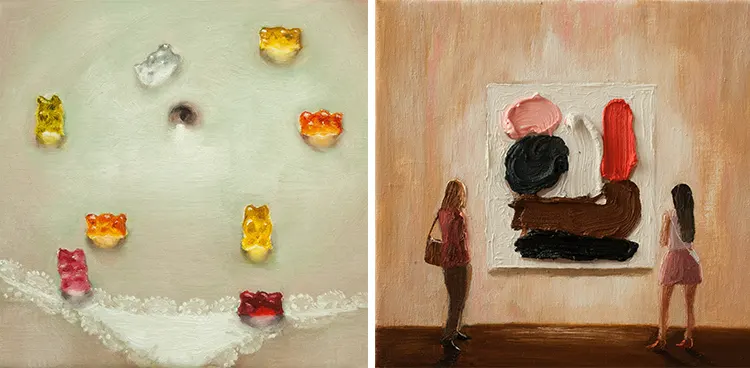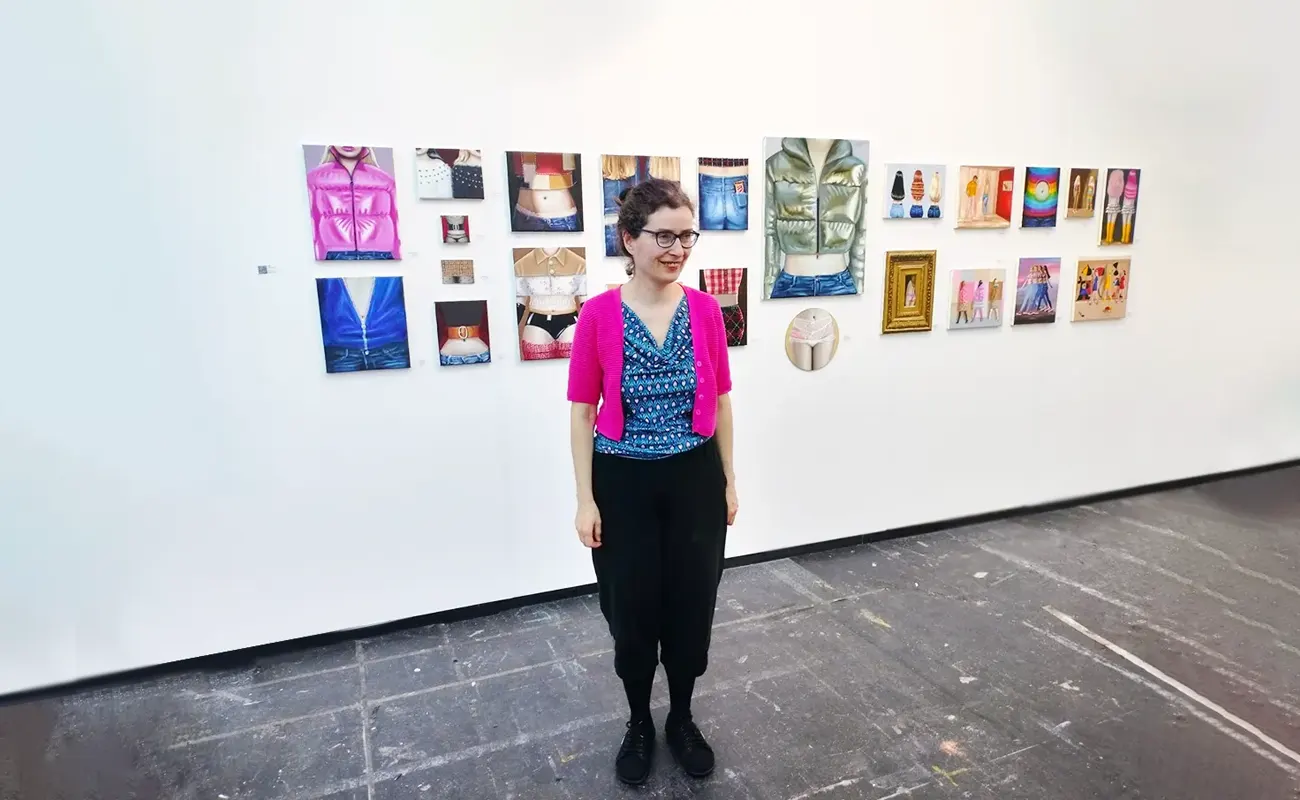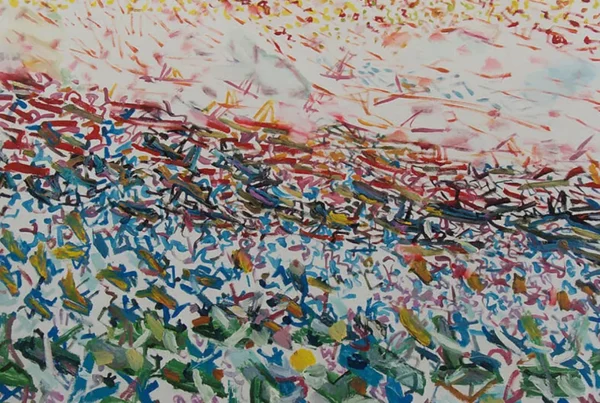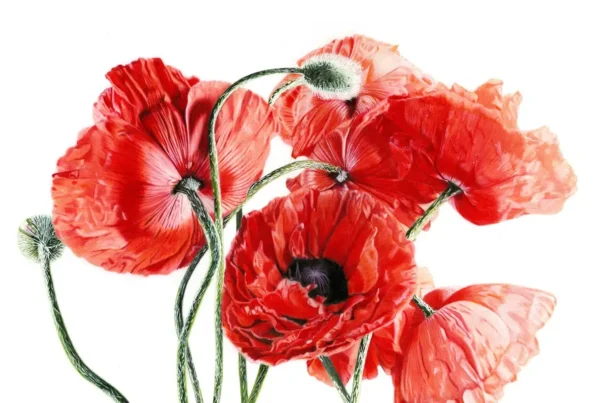“For me, the image of the girl, or the woman, even though it is a simple image, expresses many aspects of being a woman.”
A Sun-Soaked Journey through Californian and Belgian Artistic Vistas
Beth Namenwirth is an artist with an impressive lineage, her parents hailing from the Netherlands. However, her story began in the United States, with her birth and initial years marked by the distinctive Californian cultural tapestry. San Francisco’s vibrancy in the 1970s imprinted deeply upon Namenwirth, its sun-soaked avenues, energetic lifestyle, and iconic ‘flower power’ era infusing her artistic sensibilities.
The narrative of Namenwirth’s life took a turn when at the tender age of four, she relocated with her family to Belgium. This Belgian chapter of her life, which spanned her childhood and adolescence, played an equally profound role in shaping her art. Namenwirth’s creative output bears the unmistakable traces of her Belgian upbringing, with elements reminiscent of the national penchant for comic strips, humor, and surrealism — attributes discernable in the renowned works of artist René Magritte.
Artistic talent manifested early in Namenwirth’s life, as if preordained. Her grandmother famously remarked that she seemed to have been born with a pencil in hand, alluding to her natural predisposition towards drawing. This passion organically led her to pursue a formal education in art. At the tender age of 18, she secured a coveted spot in the Netherlands’ most prestigious art school, her portfolio already filled with a variety of technically astute drawings. However, her comprehensive understanding of contemporary art was something she would come to acquire in the subsequent years, enriching her artistic journey even further.

Beth Namenwirth: Embracing the Brush – A Profound Revelation in Artistry
Initially, Beth Namenwirth’s creative exploration was dominated by the use of pencil, ink, and charcoal, as these were the primary media of artistic expression at her art school. The act of painting, not widely practiced in her academic environment, was introduced during her final year by an influential mentor who encouraged the students to experiment with oil paints. This instructional pivot served as a profound revelation for Namenwirth, steering her artistry towards painting.
From 2016 onwards, Namenwirth began blending marble powder with her oil paint, an innovative technique that yielded the precise texture she desired in her work. Her unique approach to her craft, characterized by a distinctive style, has been widely recognized and appreciated by observers.
Nevertheless, Namenwirth aspires to further refine and evolve her style, by pushing boundaries and experimenting with the thickness and structure of the paint. She is also keen on exploring the abstraction of reality, along with reimagining the compositional aspects on the canvas. This reflective approach reveals Namenwirth’s commitment to continually develop her artistic voice, highlighting her quest for more daring and extreme choices in her artistry.
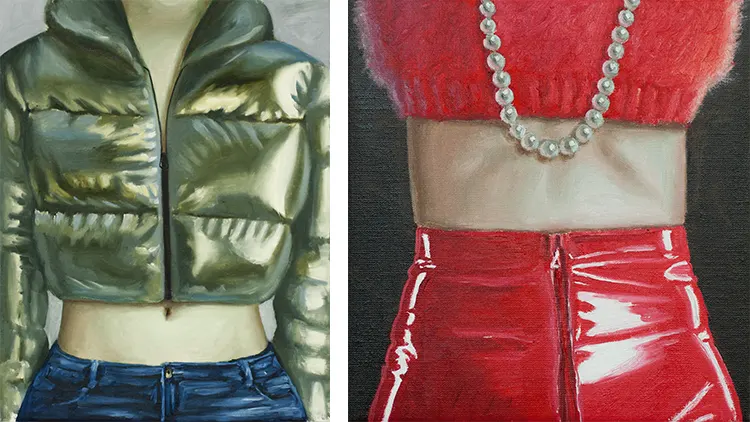
Blending Pop Art, Surrealism, and the Authenticity of Brushwork
The artistic expression of Beth Namenwirth resonates with elements of contemporary pop art, an interpretation she wasn’t initially aware of, but one that resonates with her sensibilities. Her vibrant palette and distinct shapes embody both overt and nuanced critiques of mainstream culture, particularly the societal standards of feminine beauty.
Namenwirth’s artistic oeuvre, while deeply embedded in the realm of pop art, also demonstrates compelling influences of surrealism, naive art, conceptual, and post-modern schools of thought. Her compositions, primarily figurative, are nevertheless imbued with a persistent search for abstraction. Namenwirth firmly believes in the authenticity of her medium, advocating for the paint to embody an existence of its own, an assertion palpable in the visible brushwork of her pieces.
Namenwirth’s studio, designed with an aesthetic of simplicity, contains just a table outfitted with paints and an easel. This restrained environment ensures all essential tools are within reach, while eliminating unnecessary distractions. The studio walls are adorned with her creations, offering her a comprehensive view of her oeuvre, and acting as a constant source of learning to discern what techniques prove effective and what requires modification for future work.
Namenwirth opts for self-reliance when navigating her artistic journey, predominantly abstaining from external criticism and feedback. She is a firm believer in the power of intuition, maintaining focus on her individualistic path to avoid diversion from her innate artistic vision.

Beth Namenwirth: Inspirations Unveiled – Nature, Twists, and Captivating Narratives
Beth Namenwirth’s artistic inspirations are dynamic and multifaceted, oscillating in response to her daily encounters with art. This continuous, evolving admiration lends itself to an extensive list of influences, primarily comprising painters whose work captures the essence of nature, yet instills a unique twist. Notable artists who have sparked Namenwirth’s artistic fervor include Philip Guston, Lisa Yuskavage, Georgio Morandi, Ina van Zyl, Michael Kirkham, John Currin, and Wayne Thibaud, among others.
Yuskavage’s 1995 piece, “Flesh Pot”, stands out to Namenwirth as particularly significant, representing one of the artist’s earliest works. The painting features a young woman, her breasts exposed and legs slightly parted, seated before a bare wall adorned with two frames. The simplistic nature of the image could easily be dismissed as cliché, yet the artist’s distinctive painting style and effective utilization of paint weave a narrative that is both subtle and engaging.
The captivating beauty of the painting is accentuated by the use of intense color hues and the play of subtle light. In Namenwirth’s perspective, this seemingly simple portrayal of a woman offers a profound exploration into the many facets of womanhood. It encapsulates the societal expectations for women to embody passivity and beauty, echoes the lingering reverberations of childhood dreams and fantasies, and touches on the obsession and fascination with one’s own body, driven by societal stimuli. This potent mix of themes makes the painting resonate deeply with Namenwirth, underscoring the broad range of influences that shape her own artistic journey.
